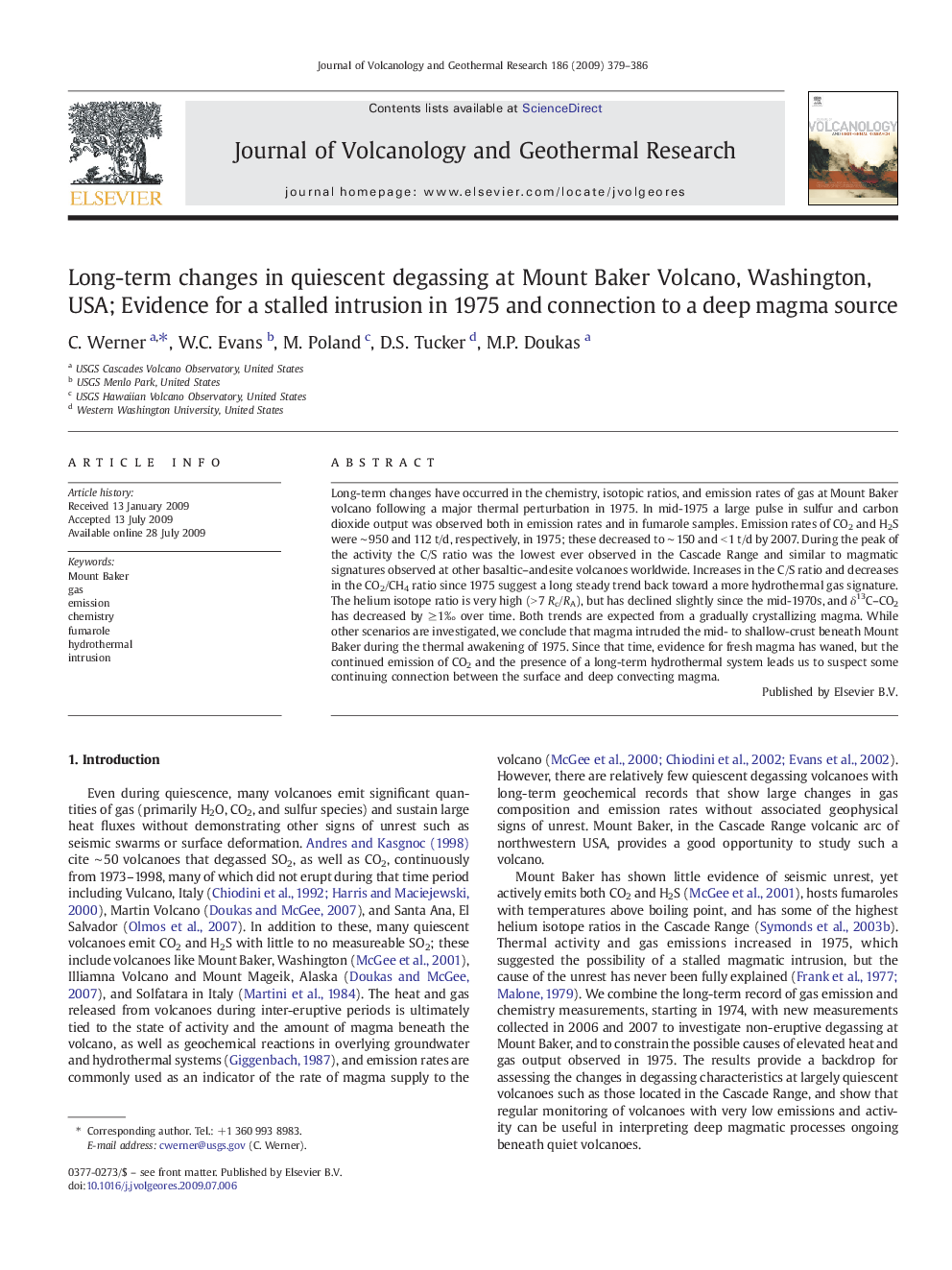| Article ID | Journal | Published Year | Pages | File Type |
|---|---|---|---|---|
| 4715225 | Journal of Volcanology and Geothermal Research | 2009 | 8 Pages |
Long-term changes have occurred in the chemistry, isotopic ratios, and emission rates of gas at Mount Baker volcano following a major thermal perturbation in 1975. In mid-1975 a large pulse in sulfur and carbon dioxide output was observed both in emission rates and in fumarole samples. Emission rates of CO2 and H2S were ∼ 950 and 112 t/d, respectively, in 1975; these decreased to ∼ 150 and < 1 t/d by 2007. During the peak of the activity the C/S ratio was the lowest ever observed in the Cascade Range and similar to magmatic signatures observed at other basaltic–andesite volcanoes worldwide. Increases in the C/S ratio and decreases in the CO2/CH4 ratio since 1975 suggest a long steady trend back toward a more hydrothermal gas signature. The helium isotope ratio is very high (> 7 Rc/RA), but has declined slightly since the mid-1970s, and δ13C–CO2 has decreased by ≥ 1‰ over time. Both trends are expected from a gradually crystallizing magma. While other scenarios are investigated, we conclude that magma intruded the mid- to shallow-crust beneath Mount Baker during the thermal awakening of 1975. Since that time, evidence for fresh magma has waned, but the continued emission of CO2 and the presence of a long-term hydrothermal system leads us to suspect some continuing connection between the surface and deep convecting magma.
